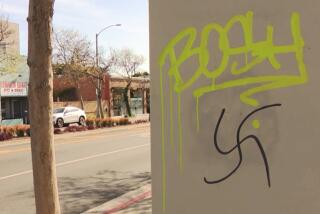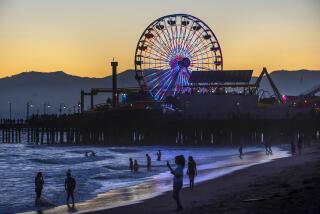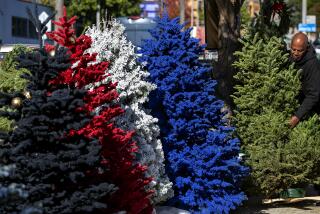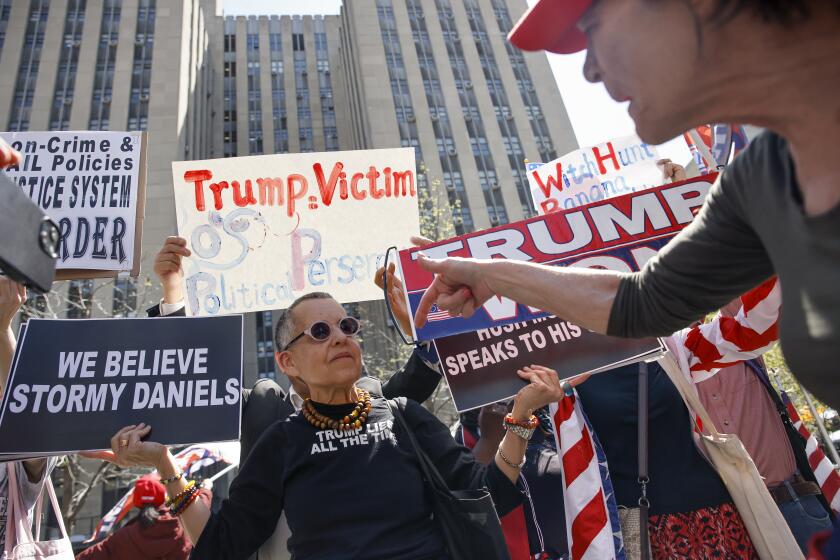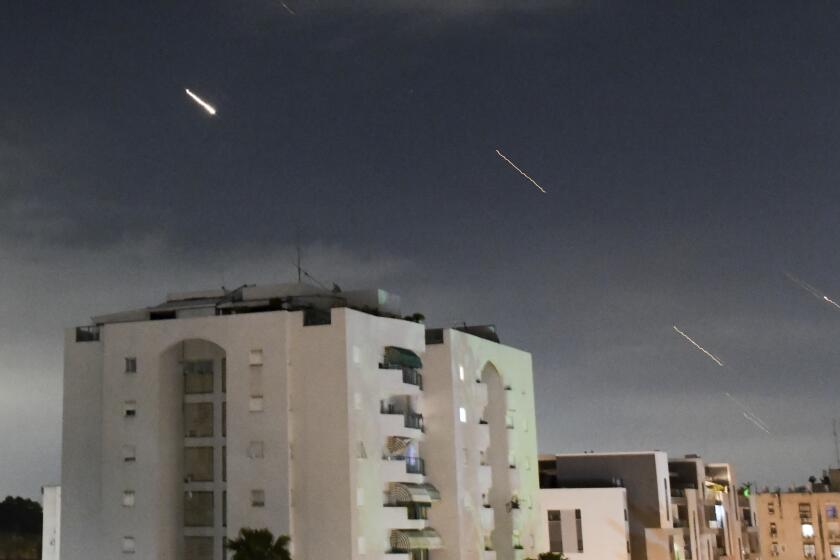In Santa Monica, a matter of mangers
Unto Santa Monica a Christmas controversy was born this year. Atheists objected to the long-standing tradition of re-creating the Nativity story in a row of life-size paintings that sprawl down the Ocean Avenue edge of Palisades Park. Arguing that this was a religious display in a public park, they applied for space to offer their own message.
In an effort to be fair, the city turned to a lottery to assign 21 plots of display space — and lo, the atheists won 18 spots. A Jewish group won a spot for a menorah. The Christians who put up the Nativity scene ended up with only two spots, compelling them to condense their usually elaborate re-creation to the creche and two other scenes. Near that is a poster from American Atheists proclaiming that millions of Americans “know myths when they see them.” (It’s illustrated with Jesus, Santa Claus, Neptune and a horned fellow.) Now, fans of the Nativity scene are angry that their tradition has been abridged — or “hijacked,” as the chairman of the Santa Monica Nativity Scenes Committee put it.
Across the country, this is the story of Christmas that plays out in various scenarios. When is one person’s public creche (or Christmas tree or Santa decoration) another person’s offending object? There is plenty of law on the matter. For example, religious displays are usually not permitted in civic buildings — especially courthouses, where the meting out of justice must never look as if it’s influenced by one religion or another. (Whether Christmas trees and menorahs are religious appears open to interpretation.) In other public spaces, like Santa Monica’s Palisades Park, it’s discriminatory to allow one kind of religious display while squelching another.
DISCUSS: Are Christmas trees still a religious symbol?
The city of Santa Monica was right to seek a way to grant space in the park to others, including atheists and the various religious groups that asked. The method it chose left Palisades Park a bit aesthetically unpleasing, like a victim of bad zoning. However, the city felt it had no other choice but to do a random lottery, according to Barbara Stinchfield, its director of community and cultural services. Taking into account the material to be displayed — even to equally distribute spaces — would have violated federal laws against regulating content of speech, she said.
One of the winning atheist groups has put nothing in its space. If it is simply holding the space to keep it away from the religious groups, as one of its organizers suggested, that’s just boorish (although possibly legal). Officials never meant to allocate space for the purpose of keeping it empty.
If there is one quality of the holiday season that would seem to translate across all beliefs and nonbeliefs, it would be the spirit of sharing. But that seems like a Christmas wish beyond anyone’s power to grant.
More to Read
A cure for the common opinion
Get thought-provoking perspectives with our weekly newsletter.
You may occasionally receive promotional content from the Los Angeles Times.
